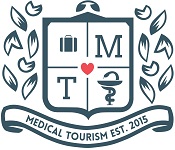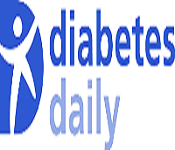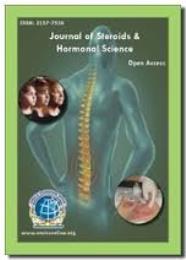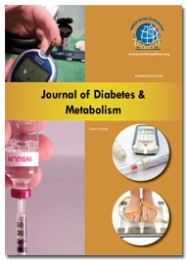Theme: Focus on Current Investigations, Treatment and Preventive Strategies for Diabetes & Metabolic Diseases
Metabolic Diseases 2019
Join us for International Conference on Diabetes and Cholesterol Metabolism
Update your skills, enhance your knowledge base, and broaden your horizons- all in one place!
Date: November 25-26, 2019
Venue: Dubai, UAE
The “International Conference on Diabetes and Cholesterol Metabolism” is going to be held on November 25-26, 2019, in Dubai, UAE.
The upcoming conference will be organized basing upon the theme “Focus on current Investigations, Treatment and Preventive Strategies for Diabetes & Metabolic Diseases".
Metabolic Diseases 2019 Conference invites all the renowned scientists, Endocrinologists, Surgeons, Peditricians, Yoga and Natural Therapists, General Physicians, Primary Health Care Specialists, Epidemiologists, Pharmaceutical Industrial Delegates, Talented Young Scientists and Student communities from worldwide to attend International Metabolic Diseases Conference under a single roof where investigators across the globe can meet, network, perceive and present new scientific innovations.
Why to attend Metabolic Diseases 2019 Conference?
Metabolic Diseases 2019 Highlights of the theme "Focus on current Investigations, Treatment and Preventive Strategies for Diabetes & Metabolic Diseases" Which basically focus on the most recent advancements in aversion and treatment of different metabolic illnesses which might be because of diabetic and endocrine difficulties and gives strong talks on Novel techniques and procedures identified with analysis, prevention and the management of Diabetic and metabolic issue and as well as exploring new thoughts and ideas for treatment of Endocrine Complications.
Conference Highlights of Metabolic Diseases 2019 Conference:
- Diabetes
- Obesity and Metabolism
- Type 1 Diabetes
- Type2 Diabetes and Its Treatments
- Hyperglycemia and Hypoglycemia
- Diabetic Neuropathy-Treatment and Care
- Diabetic Nephropathy-Treatment and Care
- Diabetic Pathophysiology
- Diabetic Encephalopathy
- Diabetic Eye Complications
- Diabetic Heart Diseases and Management
- Diabetic Coma and Nursing
- Insulin and Beta Cell Targeting
- Islet Transplantation/Immunology of Type 1 Diabetes
- Obesity Surgery
- Metabolic Changes in Diabetes
- Cholesterol and CAD (Coronary artery disease)
- Cholesterol Metabolism
- Hypercholesterolemia and Hypocholesterolemia
- Lipid Metabolism and Diabetes
- Inborn error of Metabolism
- Complication & Preventions of Diabetes
- Pharmaceutical Diabetes Treatments & Diagnosis
Targeted Audiences of Metabolic Diseases 2019 Conference:
- Endocrinologists
- Diabetologists
- Researchers
- Students
- Nurse educator
- Dietitian
- Neurologists
- Ophthalmologist
- Cardiologists
- Nephrologists
- Drug Manufacturing Companies and Industries
- Laboratory Technicians and Diagnostic Companies
- Pharmaceutical Companies and Industries
- Diabetes societies & associations
- Medical & Pharmaceutical companies
Track 1- Diabetes
Diabetes is a condition which impairs the body’s ability to process the blood glucose otherwise known as blood sugar. The pathogenesis in the development of diabetes depends on the fact that the β-islet cells of pancreas get impaired, which causes lack of control of blood glucose. The development of diabetes becomes additional inevitable if the failure of β-islet cells of the pancreas is accompanied by insulin resistance. Diabetes is a metabolic condition where the body produce less amount of insulin. There are 3 types of diabetes seen in today’s life i.e. Type1 and Type2 diabetes both are caused by a combination of genetic and environmental risk factors. And the last one is gestational diabetes which occurs normally in women during pregnancy for which the body become less sensitive to insulin. Gestational diabetes can occur in some women and it usually resolves after giving birth to a child.
- Somogyi effect and Dawn phenomenon
- Fasting glucose test
- Oral glucose tolerance test (OGTT)
- Glycemic index
Track 2- Obesity and Metabolism
Obesity is a chronic metabolic disorder that basically affects children and adults worldwide and also known to be the main risk factor for a number of non-communicable diseases, particularly in type 2 diabetes. Body mass index (BMI) has a most common relationship to diabetes and insulin resistance. In obesity patents having an amount of no esterified fatty acids, cytokines, glycerol, pro-inflammatory markers, hormones and other substances that are involved in the development of insulin resistance, is increased.. Body mass and weight gain are central to the formation and rising incidence of type 1 and type 2 diabetes. Extra weight is a main cause of insulin resistance and seen mostly in people with type 2 diabetes. Extra belly fat also causes insulin resistance, type 2 diabetes, and heart and blood vessel disease.
- Obesity and type 1 diabetes
- Obesity and type 2 diabetes
- Obesity and insulin resistance
- Diabetes mellitus and obesity
Track 3- Type 1 Diabetes
Type 1 also known as juvenile diabetes and occurs when the body fails to produce insulin. People with Type 1 diabetes are insulin-dependent, which means they must take artificial insulin daily to stay alive otherwise some other rare forms of diabetes would be directly inherited. That includes Maturity Onset Diabetes in the Young (MODY), and diabetes due to mutations in mitochondrial DNA. In addition to the consequences of abnormal metabolism of glucose it can cause hyperlipidaemia, glycosylation of proteins. Type1 Diabetes is caused by the autoimmune destruction of the beta cells of the pancreas and represents approximately 10.5% of all cases with diabetes. Generally lifelong insulin therapy is the only treatment for this disorder. Without exogenous insulin injections, individuals with Type1 Diabetes will not survive.
- Genetic studies on Type1 and Type 2 Diabetes
- The value of monogenic subtypes of diabetes
- Factors contributing to the complexity of analysis
- DNA diagnostics and pharmacogenetics in clinical trials
Track 4: Type2 Diabetes and Its Treatments
Type2 Diabetes is the most frequent form of the disorder that affects around 95% of all individuals. A diagnosis of Type2 i.e. Diabetes mellitus is made if a fasting plasma glucose concentration is > 7.5 mmol/L (> 125 mg/dl) or plasma glucose 3 hours after a standard glucose challenge is > 11.5 mmol/L (> 280 mg/dl) (WHO, 1999). Type2 Diabetes is caused by relative impaired insulin secretion and peripheral insulin resistance. Type 2 diabetes affects the body in the way it uses insulin. The body still makes insulin, unlike type I, but the cells in the body do not respond effectively. The relative abundance of lack of exercise and food i.e. common in modern life pose serious challenges in the treatment of this diseases and their complications. Obesity is an important risk factor for type 2 diabetes mellitus. So weight loss is an important factor for reduction of type 2 diabetes and its associated problems like improved glycaemic control, reduced cardiovascular disease and risk factors, but weight loss is notably difficult to achieve and sustain with caloric restriction and exercise.
- Diet, physical activity, and behavioural therapy
- Herbal drugs used for the treatment of diabetes
- Diabetes treatment with stem cells
- Pathophysiology and treatment of type 2 diabetes
- Potential risk factors of type 2 diabetes
Track 5: Hyperglycemia and Hypoglycemia
Hyperglycaemia and hypoglycaemia these both conditions could be part of silent diabetic symptoms and they both involve difficulty in regulating blood sugar, or glucose. Hyperglycaemia causes due to high blood sugar (glucose) level. It's a common problem for people those are affected with type 1 diabetes and type 2 diabetes, as well as pregnant women with gestational diabetes. High blood glucose levels lead to complication of Hyperglycaemia. It is a life-threatening condition. It requires immediate medical attention. Physical signs and symptoms of Hyperglycaemia includes extreme thirst, frequent urination, general weakness, abdominal pain, High fever (greater than 101 degrees F) sleepiness, confusion, hallucinations.
Hypoglycemia is a condition caused by a very low level of blood sugar (glucose), i.e. body's main energy source. Hypoglycemia is often related to the treatment of diabetes and it lowers the glucose level below 72 mg/dL (3.8mmol/L). The brain is at risk when glucose concentration goes below 72 mg/dL (3. 8 mmol/L). Symptoms of Hypoglycaemia includes Shaking, sweating, or clammy skin, Sudden nervousness, confusion, headache, or irritability, Rapid heart rate, Dizziness, weakness, or fatigue, hunger and nausea.
- Signs of hyperglycemia
- Signs of hypoglycaemia
- Hypoglycaemia in an individual with diabetes
- Low blood glucose
- Severe complications from hyperglycaemia
- Ways to manage hypoglycaemia and hyperglycemia
Track 6: Diabetic Neuropathy-Treatment and Care
Diabetic neuropathy (DN) is caused by high blood sugar levels sustained over a long period of time. Other factors can lead to nerve damage due to lifestyle factors, such as alcohol or smoking use, damage to the blood vessels, such as damage done by high cholesterol levels, and mechanical injury, such as injuries caused by carpal tunnel syndrome. Low levels of vitamin B12 can also lead to Diabetic neuropathy. Depending on the affected nerves, the diabetic neuropathy symptoms can be include from pain and numbness in the legs and feet to problems with the digestive system, urinary tract, blood vessels and heart. In some people it may show mild symptoms but for some people it may be very painful and serious complications.
There is no cure for diabetic neuropathy (DN), but treatment can slow the progression of the condition. Treatment can also help to manage symptoms, such as pain and indigestion.
- Radiculoplexus Neuropathy (Diabetic Amyotrophy)
- Peripheral Neuropathy and Diabetes
- Proximal Neuropathy
- Focal Neuropathy
- Autonomic Neuropathy
Track 7: Diabetic Nephropathy-Treatment and Care
High blood glucose, also called blood sugar, can damage the blood vessels in the kidneys. When the blood vessels get damaged, they don’t work properly so that many people with diabetes develop high blood pressure, which can damage kidneys. Diabetic kidney disease is defined as macro albuminuria (albumin to creatinine ratio [ACR] >35 mg/mmol [400 mg/g]), or micro albuminuria (ACR 3.5-35.0 mg/mmol [35-400 mg/g]) associated with retinopathy (type 1 diabetes or type 2 diabetes) and/or >11 years' duration of type 1 diabetes mellitus (T1DM). The terms 'moderately inflated symptom' and 'severely inflated symptom' measure currently oftentimes used rather than micro albuminuria & macro albuminuria. In most patients with diabetes, chronic kidney disease can be attributable to diabetes mellitus if these criteria are met. Other causes of diabetic kidney diseases should be considered in the presence of any of the following circumstances: rapidly decreasing GFR, absence of diabetic retinopathy, presence of active urinary sediment, or signs or symptoms of other systemic disease. The diagnosis is most of the time conclusively made by kidney biopsy, though it is rarely necessary.
- Non-diabetic kidney disease
- Renal tract obstruction
- Multiple myeloma
- Use of drug therapies for glycemic control
- Diabetes inspidus
Track 8- Diabetic Pathophysiology
Type2 diabetes mellitus is characterized by a both combinations of inadequate insulin secretion by pancreatic beta cells and peripheral insulin resistance. Insulin resistance, which has been associate to proinflammatory cytokines in plasma and elevated levels of free fatty acids, it leads to decreased glucose transport into muscle cells, elevated hepatic glucose production, and increased breakdown of fat. The major role for excess glucagon cannot be underestimated; indeed, Type2 diabetes (T2D) is an islet paracrinopathy in which the reciprocal relationship between the insulin-secreting beta cell and the glucagon-secreting alpha cell is lost, which leads to hyperglucagonemia and hence the consequent hyperglycaemia. For type 2 diabetes mellitus (T2DM) to occur, both insulin resistance and inadequate insulin secretion must exist. Generally all overweight or obese individuals have insulin resistance, but diabetes develops only in those individuals who cannot raise insulin secretion to that level so that it can compensate for their insulin resistance. Their insulin concentrations may be high, which results in low level of glycaemia.
- Acute pancreatitis symptoms
- Identification of β-cell dysfunction and insulin resistance
- Differentiation of diabetes by pathophysiology, natural history
- Clinical features of diabetes mellitus
Track 9: Diabetic Encephalopathy
Diabetic encephalopathy is a form of brain damage caused by diabetes., the general term for brain disease or damage. The way in which symptoms are presented varies based on whether someone with the condition is a Type1 diabetic or a Type2 diabetic. As a relatively unknown diabetes complication, diabetic encephalopathy has become more common as the number of people with Type1 and Type2 diabetes rises. Diabetic encephalopathy develops mentally and physically as diabetes goes untreated. Diabetic encephalopathy has been known to be common in some low-income areas where people can’t properly monitor their diabetes. Diabetic encephalopathy occurs as a result of acute hypoglycemia (low blood sugar levels) or severe hyperglycemia (severely high blood sugar levels). Encephalopathy in Type1 diabetes may result in learning disabilities and memory issues. Where as encephalopathy in Type2 diabetes may cause oxidative stress which creates abnormal molecules and blood vessels in the brain may also be affected by inflammation. Diabetic mastopathy is an uncommon complication of diabetes which can be characterised by tough masses that develop in the breast. Most commonly diagnosed in premenopausal women with Type1 diabetes. Diabetic encephalopathy is a form of brain damage caused by diabetes.
- Hypercholesterolemia, hypertension and obesity
- Diabetic dyslipidemia
- Preventing complications of brain damage
Track 10: Diabetic Eye Complications
Diabetic Eye Complications comprises various eye problems that seen in diabetic people. These conditions are called diabetic retinopathy, diabetic macular edema (DME), cataract, and glaucoma. Diabetic retinopathy may cause mild vision problems. Eventually, it may cause blindness also. This condition can develop in anyone who has Type1 diabetes or Type2 diabetes. DME usually takes on two form i.e. Focal DME, which occurs because of abnormalities in the blood vessels in the eye and the Diffuse DME, which occurs because of widening/swelling retinal capillaries (very thin blood vessels).
- Retinal abnormality
- Diabetic retinopathy
- Diabetic Macular Edema (DME)
- Non-proliferative retinopathy
Track 11- Diabetic Heart Diseases and Management
Having diabetes means that person more likely to develop congenital heart disease and have a greater chance of heart attack or a stroke also. People with diabetes are also more likely to have certain conditions, which increase the chances of having heart disease, such as high blood pressure or cholesterol. If a person have diabetes, that person can protect their heart and health by managing blood glucose, also called blood sugar, as well as blood pressure and cholesterol. Over time, the build up sugar damage human nerves, heart, blood vessels and kidneys. The longer time the person having diabetes, the chances of that person to develop heart disease will increase.
Diabetic cardiovascular disease is treated with life-style changes, medical procedures and medicines. The goals of treating diabetic heart disease include: controlling diabetes and any other heart disease risk factors person have, unhealthy blood cholesterol levels and high blood pressure.
- Reducing or relieving heart disease symptoms, such as angina (discomfort or chest pain)
- Preventing or delaying cardiovascular disease complications, like a coronary failure
- Repairing heart and coronary artery damage
- Risks associated with T2D and CVD
- Diabetic cardiomyopathy
- Diabetes, heart disease, and stroke
- Abnormal cholesterol levels
Track 12: Diabetic Coma and Nursing
Diabetic coma may be a dangerous polygenic disease complication that causes state of mind. When blood sugar levels are too high or too low then that serious condition can lead to a diabetic coma. Before developing a diabetic coma, usually some experiences of signs that will shows like high blood sugar or low blood sugar. High blood sugar (hyperglycaemia) symptoms are increased thirst, frequent urination, fatigue, nausea and vomiting, shortness of breath, stomach pain, a very dry mouth and a rapid heartbeat. Signs and symptoms of a low blood sugar level may include shakiness or nervousness, anxiety, fatigue, weakness, sweating, hunger, nausea, dizziness or lightheadedness, difficulty in speaking.
Diabetes is Associate in Nursing system illness, endocrinology nurses may work with people who have diabetes, and go by the title diabetes nurse. Diabetes mellitus has a general problem of endocrine system. The diabetes nurses area unit educators and disease management specialists ready to offer patients with the data and treatment they have to effectively manage their polygenic disease. The main further responsibilities of polygenic disease nurse area unit providing nutritionary medical aid, adjusting the type and dosage of medication, and providing behavioral and psychiatric care.
- Diabetic hypoglycaemic coma
- Diabetic hypoglycaemic coma
- Diabetic ketoacidosis coma
- Professionals working in the field of diabetes nursing
- Diabetes mellitus medications & nursing management
- Roles and responsibilities of nurses
Track 13: Insulin and Beta Cell Targeting
Type2 diabetes mellitus is widely considered as chronic disease without cure. When beta-cell function progressively declines most of the time, then only blood glucose level rises. However, recent studies have demonstrated remission of Type2 diabetes following bariatric surgery, intensive insulin therapy or very low calorie diet, raising the possibility that the declining beta-cell function in Type2 diabetes may be arrested or even reversed. Future treatment ways ought to be revised to focus on to early beta-cell preservation and people sickness remissions.
- Targeting β-cell mass in type 2 diabetes
- B-cell science
- The incretin effect and its mediators
- Implications for treatment
- Effects of the incretins on β-cell mass
- Targeting the pancreatic β-cell to treat diabetes
Track 14: Islet Transplantation/Immunology of Type 1 Diabetes
Islet transplantation is a beautiful technique for the treatment of kind one polygenic disorder, because of its minimal invasion to patients and potential high efficacy. The treatment may effectively control blood glucose levels for Type 1 diabetes that results in an improvement in HbA1c and may also result in the increase in hypoglycaemic conditions. Approximately 75% of transplanted Type 1 diabetic (T1D) patients have overcome this disorder. However, there are still more important issues that need to be addressed before this treatments and diagnosis are widely applicable, and including difficulty in maintaining insulin independence, multiple donor requirements, low islet isolation success rate, and side effects associated with the use of immunosuppressant. Here donor shortage is another dilemma. To addressing the issue of donor shortage, bioartificial islet transplantation and living donor islet transplantation using pig islets are being evaluated. Bioartificial islet transplantation may be the most effective resolution of the donor shortage.
- Immune System in Health and Disease
- Post transplantation monitoring
- Islet transplantation for type 1 diabetes
- Blood glucose management, and assessment of islet function
- Challenges facing islet transplantation
Track 15: Obesity Surgery
Obesity is a chronic metabolic disorder that basically affect children and adults worldwide and also known to be the main risk factor for a number of non-communicable diseases, particularly in type 2 diabetes. Nowadays most weight loss surgeries are performed using minimally invasive techniques such as laparoscopic surgery. By this obesity surgery we can also calculate the Body Mass Index (BMI). The associated health risks of “morbid obesity”(unhealthy weight) includes diabetes, heart diseases, hypertension, sleep apnoea and life expectancy.
- Gastric Bypass
- Sleeve Gastrectomy
- Adjustable gastric bands
- Biliopancreatic diversion
- Gastric Stapling
- Jaw Wiring
Track 16: Metabolic Changes in Diabetes
A metabolic disease occurs when the metabolism processor fails and causes the body to contain much more or very little of the essential substances that is required to stay healthy. Diabetes is a metabolic disease which disrupt normal metabolism, the mechanism of converting food to energy on a cellular level. Metabolic disorders may effect on the ability of the cell to perform critical biochemical metabolism that involve the processing of proteins (amino acids), carbohydrates, or lipids (fatty acids).
Endocrine disorders involve the abnormality of over- or under-production of certain hormones, among the endocrine disorders, thyroid problems are the most common. Endocrine disorders include hypothyroidism, diseases of the parathyroid gland, congenital adrenal hyperplasia, diabetes mellitus, ovarian dysfunction (including polycystic ovary syndrome) and diseases of the adrenal glands (Cushing’s syndrome and Addison’s disease), among others. Metabolic disorders affect the body’s ability to process certain vitamins and nutrients. Some examples of metabolic disorders are cystic fibrosis, hyperlipidaemia, phenylketonuria (PKU), gout, and rickets. Pre-diabetes has 1st accustomed denote abnormalities of maternity (e.g., hydramnios, high–birth weight babies) or a robust case history of type2 polygenic disease.
- Potential mechanism of SGLT2I induced euglycemic diabetic ketoacidosis
- Anorexia nervosa
- Endocrine reproductive disorders
- Hyperlipidaemia
- Osteoporosis
- Thyroid and Parathyroid diseases
- Metabolic bone diseases
- Clinical approach to endocrine and metabolic diseases
- Pre-Diabetes as Intermediate Hyperglycemia
Track 17: Cholesterol and CAD (Coronary artery disease)
Cholesterol helps the body to build and insulate nerves, new cells and produce hormones. Generally, the liver makes all the cholesterol that the body needs. But sometimes cholesterol travels in the bloodstream in high-density lipoproteins (HDL) and low-density lipoproteins (LDL). HDL is also called as “good cholesterol” because it picks up cholesterol and takes it back to the liver for disposal where as LDL transmits cholesterol in to the parts of body that need it. It is sometimes referred as “bad cholesterol”. If bloodstream having this bad cholesterol, it can cling to the walls of heart arteries, eventually clogging them. Too much cholesterol in taking is a risk factor for cardiac diseases. Some dietary intake factors influence to the risk of CAD include trans-fats, saturated fats, and polyunsaturated fatty acids.
- Menopause and cardiovascular disease
- Low HDL cholesterol
- High LDL cholesterol
- Serum cholesterol
- Genetic risk factor for coronary artery disease
Track 18: Cholesterol Metabolism
Cholesterol is an essential lipid for mammalian cells and its homeostasis is tightly regulated. Disturbance of cellular cholesterol homeostasis is linked to atherosclerosis and cardiovascular diseases. A central role in the sensing and regulation of cholesterol homeostasis is attributed to the endoplasmic reticulum (ER). This can lead to atherosclerosis, vessel dysfunction and blocked blood flow, the underlying mechanism for cardiovascular diseases (CVDs). CVDs include stroke, heart attack and peripheral arterial disease (PAD) among others.
- Transcription factors
- Atherosclerosis
- Unfolded protein response
- Endoplasmic reticulum stress
- Cholelethiasis
Track 19: Hypercholesterolemia and Hypocholesterolemia
Hypercholesterolemia is a condition which can be characterized by very high levels of cholesterol present in the blood. Individuals with hypercholesterolemia have a high risk of developing a form of heart disease called coronary artery disease. If cholesterol accumulates in the tendons, it results in a characteristic growth called tendon xanthomas. Yellowish cholesterol that deposits under the skin of the eyelids are known as xanthelasmata. Hypocholesterolemia is the presence of abnormally low levels of cholesterol in the blood. Hypocholesterolemia, on the other hand, can be due to malnutrition, decreased liver function, intestinal loss, hyperthyroidism, Addison’s-like disease.
- Xanthelasmata
- Arcus Cornealis
- Porto-systemic shunts
- Inflammatory bowel disease
- Hypoadrenocorticism
Track 20: Lipid Metabolism and Diabetes
Patients with polygenic disorder often show abnormal lipid profiles as a result of hormone regulates several steps of lipid metabolism. Patients those with Type1 diabetes exhibit adequate glycaemic control but do not have quantitative lipoprotein abnormalities, but those exhibit qualitative abnormalities, primarily an increase in smaller, more atherogenic very lowâ€density lipoprotein (VLDL) particles. Moreover, in the study of diabetes, and Diabetes Control & Complications Trial(DCCT), both group of patients with type1 diabetes were characterised by consistent weight gain, exhibited more lipid profiles in Type2 diabetes (T2D). Dyslipidaemia in Type2 diabetes is characterised by many strictly linked abnormalities: a significant decrease in highâ€density lipoprotein (HDL) cholesterol, elevated fasting and postprandial triglycerides (TG), and an increase in smaller lowâ€density lipoprotein (LDL) and high density lipoprotein (HDL) particles.
- Diabetes Control and Complications
- Hyperglycemia and insulin resistance
- Dyslipidemia
Track 21: Inborn error of Metabolism
Inborn errors of metabolism are single gene disorders that results from the defects in the biochemical pathways of the body. Although these disorders are individually rare, collectively it accounts for childhood disability and deaths. All inborn errors of metabolism are genetically transmitted, typically in an autosomal recessive fashion. Children with inherited metabolic disorders which mostly appear normal at birth because metabolic intermediates responsible for the disorder are usually small molecules that can be transported by the placenta and then eliminated by the mother’s metabolism.
- Prevention can be done by shot gun and laser treatment
- Elevated plasma ammonia level
- Metabolic acidosis
- X-linked recessive
Track 22: Complication & Preventions of Diabetes
For patients with diabetes mellitus (DM), chronic complications can be occur. Cardiovascular illness which is the major cause of morbidity and mortality among these patients, encompasses macrovascular disease, with heart attacks, strokes, and gangrene; and microvascular disease, with retinopathy, nephropathy, and neuropathy (somatic and autonomic). Macrovascular events occur earlier in individuals with Diabetes Mellitus than in people without Diabetes Mellitus. Diabetic arteriopathy, which encompasses endothelial dysfunction, inflammation, hypercoagulability, changes in blood flow, and platelet abnormalities, contributes to the early evolution of these events.
- Use of anti-inflammatory drugs
- Lowering low-density lipoprotein cholesterol
- Hypertension & Glycemic Control
- Taking of insulin or sulphonylurea drug
- Proper treatment of ocular and cardiovascular disease
Track 23: Pharmaceutical Diabetes Treatments & Diagnosis
People with type 2 diabetes can achieve normal blood sugar levels with proper diet, daily exercise and medications or insulin therapy. Insulin, along with diet, is crucial to the survival of individuals with type 1 diabetes. Pancreatic islet allo-transplantation is a procedure in which islets from the donor pancreas are transferred into another person to treat type 1 diabetes and have been a promising cellular-based therapy.
The artificial secretory organ or the artificial pancreas is also a machine which could monitor glucose levels pattern using an infusion pump, whenever it is required. Bariatric surgery (weight loss surgery) is performed by reducing the size of the stomach with a gastric band or through removal of a portion of the stomach. Use of insulin on daily basis can be done either by needle & syringe, pen, pump, inhaler and injection port etc. The recent advancements in nanomedicine embody smart medication that entirely activate once needed, nanoformulations for economical drug delivery, designed microbes that manufacture human hormones, and even nanorobots, which might move autonomously around the body acting as a boost, for our immune system, red blood cells, or many other biological systems.
- Diet, Physical Activity, and Behavioral Therapy
- Obesity with antidiuretic drugs
- Pharmacologic Interventions
- Assessment of glycemic control
- Genetic screening and Diagnosis
- Uses of biomarkers
“The International Conference on Diabetes and Cholesterol Metabolism” is going to be held in Dubai, UAE during November 25-26, 2019 based upon the theme " Focus on Current Investigations, Treatment and Preventive Strategies for Diabetes & Metabolic Diseases". This conference highlights on the topics related to diabetes, obesity, diabetes mellitus, metabolic and endocrine disorders, diabetes complications, cholesterol metabolism, lipid metabolism, cardiovascular diseases, hypercholesterolemia, recent advancements in treatments and therapies.
Summary:
Metabolic Diseases 2019 will feature the latest developments in research, diagnosis, prevention and management of metabolic diseases and diabetes. Various new insulin analogues and new technologies have been devised for diabetic prevention and for treating obesity. Not only this innovative conference will enhance your practical and theoretical knowledge, but it will also provide you with the unique opportunity to meet and network with a wide range of professionals in the field of diabetes and for its treatments.
Importance & scope
A number of people who are suffering from Diabetes disorders continue to rise per each year. As reported by the World Health Organization (WHO), on an average 1 out of every 13 people are diagnosed with Diabetes each year and assumes that diabetes will be the 7th leading cause of death in 2030. Around 60% of the populations affected with Diabetes are uncaring of the situation. The importance of both diabetes and their comorbidities will continue to increase as the population ages.
Why in Dubai, UAE?
November 25-26, 2019, in Dubai, UAE struggle to develop a responsive health care system is exacerbated by Associate with health insurance coverage is incomplete. A restricted range of international, national and native studies on the polygenic disorder like diabetes and other related diseases in Dubai were identified. National survey data suggest that in 2007 the prevalence of diabetes was 6.1%, of which 71.4 % of cases were unknown. This estimate hides massive intercountry variation. the foremost commonly-identified complication was diabetic neuropathy. The rising prevalence of Diabetes has become a global problem and affects almost 112.2 million in the Western Pacific region (more individuals than in the other region). Non-communicable diseases are calculable to around 59% of all deaths in Dubai, UAE.
Global Market Research on Diabetic and Metabolic Diseases
The average cost per patient is more than USD 400,000 a year, mostly covered by National Health insurance. About 6.5% of adults between the ages of 20 and 59 are diabetic and it is estimated that Dubai, UAE may have more than 60% of undiagnosed cases. According to various research studies, it is reported that at present nearly 415 million people are affected by diabetes globally, and this number is expected to increase to over 640 million by 2040. It is also proved that the increasing prevalence of diabetes results to other diseases related to kidney, liver, eyes, etc. The total number of people with diabetes is projected to rise from 151 million in 2001 to 348 million in 2028. The prevalence of diabetes is seen higher in case of men than women, but nowadays there are more women with diabetes than men. The urban population in developing countries is projected to double between 2001 and 2028. The prevalence of diabetes and metabolic diseases for all age-groups worldwide was estimated to be 2.2% in 2001 and 4.5% in 2028.
An estimated 1.3 million deaths were directly caused by diabetes and another 2.1 million deaths were attributable to high blood glucose and other Metabolic disorders. Almost half of all deaths attributable to high blood glucose occur before the age of 55 years. WHO projects that from all other disease’s diabetes will be the 7th leading cause of death in 2030. The global metabolic disorder therapeutics market size is expected to reach USD 84.56 billion by 2025. The market is anticipated to witness a CAGR of 7.56% during the estimated period. Rising incidences of diabetes, obesity, and hypercholesterolemia are expected to drive the market growth. It is estimated that by 2040, about 1 person in 11 people worldwide is likely to suffer from one of the aforementioned diseases. Researchers estimate that the prevalence of metabolic diseases like obesity and diabetes is expected to double in the coming 2 decades, mainly in U.S. and Asian and Latin American countries.
Insulin Delivery Device Market Analysis
Increasing demand for insulin delivering devices and minimally invasive alternatives such as pumps, advancements in insulin devices in terms of design and functioning, increasing prevalence of diabetes and ease offered by some endocrine delivery devices to patients and by this key market growth driving factors determined worldwide. Insulin pumps market was valued more than USD 1.9 billion in 2017 and is forecast to grow at a CAGR of over 7.5% from 2018 to 2024. The need for better diabetes management will drive demand for the insulin pumps during the forecast period. Minimally invasive nature of pumps will increasingly attract more consumers over the coming years, especially in industrialized nation, however, their cost will prove to be a major restraining factor for the business growth. Insulin pen is most popular as insulin delivery devices; in fact, its market valued at over USD 5.5 billion in 2017. Being available since late 1980’s, its business has grown into a multi-billion-dollar market and is expected to lead the industry during the forecast period. Insulin pen adoption is most likely to grow in developing nations having more than average diabetes patient in low income group.
Prevalence of Obesity and Overweight Analysis
According to country estimates for 2007, over 45% of each men and ladies within the World Health Organization European Region were overweight, and roughly 29% of ladies and 22% of men were obese. It is the cause of many health problems, such as obesity, heart disease, and certain cancers. Obesity leads to short- and long-term health problems for mother and her child, if she is excess weight during pregnancy. Incidence of T2DM was even higher among certain ethnic groups—15% among American Indians but lower among Chinese Americans − 4.3%. South Americans had a very high prevalence of metabolic syndrome as well as higher incidence of abdominal obesity. In China, between 1992 and 2002, the prevalence of overweight and obesity increased from 14.6 to 22.3%—based on WHO criterion. According to WHO, 37.9% of adults over 20 years were suffering with the obesity between 2013 and 2014 and 70.7% of adults aged 20 years and over were suffering with overweight, including obesity. These stats show the opportunity of market players within the America region.
Universities which are dealing with Diabetic and Metabolic Diseases Research Worldwide:
-
United Arab Emirates University
-
University of Strasbourg (Strasbourg, France)
-
Columbia University (New York, NY, USA)
-
Imperial College London Diabetes Centre (UAE)
-
New York University (UAE)
-
Gulf Medical University (UAE)
-
University Udayana (Indonesia)
-
Harvard University (Cambridge, MA, USA),
-
Oxford University (Oxford, UK)
-
Yale University (New Haven, CT, USA)
-
McMaster University (Hamilton, ON, Canada)
Societies Associated which are dealing with Diabetic and Metabolic Diseases Research World:
-
Global Health Partner Diabetes Centre Dubai
-
Joslin Diabetes Centre Dubai
-
FAND – Italian Association of Diabetics
-
International Diabetes Federation- Italy
-
Immunology of Diabetes Society
-
Emirates Diabetes Society
-
American Diabetes Association
-
Korean Diabetes Association.
-
Al Jalila Foundation Research Centre in Dubai
-
Diabetes Research Institute Dubai
-
Diabetes Education in Tribal Schools (DETS)
-
Australian Diabetes Society
-
The Asian Association for the Study of Diabetes
-
Juvenile Diabetes Association
-
Japan Diabetes Society
-
Spanish Diabetes Society
-
The Society for Study of Inborn Errors of Metabolism
-
American Association of Clinical Endocrinologists
-
Canadian Association of Centres for Management of Hereditary Metabolic Diseases
-
Spanish Society of Endocrinology and Nutrition
-
Japanese Society of Inherited Metabolic Diseases
-
Australasian Society for Inborn Errors of Metabolism
-
The International Society of Endocrinology (ISE)
-
Society for Inherited Metabolic Disorders
-
British Society for Neuroendocrinology
-
European Neuroendocrine Association (ENEA)
Hospitals and Research Clinic which are dealing with Diabetic and Metabolic Diseases Research Worldwide:
-
Cleveland Clinic Dubai
-
Mayo Clinic (Rochester, MN),
-
Massachusetts General Hospital (Boston, MA)
-
Cleveland Clinic (Cleveland, OH)
-
Johns Hopkins Hospital (Baltimore, MD)
-
Addenbrooke’s Hospital – Cambridge, Barnet General Hospital (UK)
-
Cygnet Hospital Beckton (UK)
-
Wooridul Spine Hospital-Seoul (South Korea)
-
BIMC Hospital- Nusa Dua (Indonesia)
-
Fortis Memorial Research Institute (India)
Related Conferences:
13th International Conference on Endocrinology, Diabetes and Metabolism; April 08-09, 2019 Wellington, New Zealand
4th Annual Diabetes, Obesity, & Metabolic Disease Conference; April 12-14, 2019, New Orleans, Louisian
21st International Conference on Diabetes and Metabolism; May 2-3, 2019, Rome, Italy
2nd Global Experts Meeting on Diabetes, Hypertension & Metabolic Syndrome; May 17-18, 2019 Holiday Inn Singapore Atrium, Singapore
3rd Global Summit of the Diabetes and Endocrinology (Diabetes-2019) ; May 30-31, 2019 at Nice, France
2nd Global Meeting on Diabetes and Endocrinology; May 30-31, 2019 Istanbul, Turkey
4th International Conference on Metabolic Syndrome; June 20-21, 2019 Paris, France
55th Annual Meeting of the European Association for the Study of Diabetes; September 16-20, 2019, Barcelona, Spain
15th World Congress on Endocrinology & Diabetes; September 19-20, 2019 Prague, Czech Republic
Euro Diabetes Congress & Expo; Oct 03-04, 2019 Paris, France
27th International Diabetes and Healthcare Conference; November 25-26, 2019 Istanbul, Turkey
International Diabetes Federation Congress 2019; December 2-6, 2019, Busan, Korea
Related societies:
Middle East Countries: Emirates Diabetes Society | Global Health Partner Diabetes Centre | Joslin Diabetes Centre | Al Jalila Foundation Research Centre | Diabetes Research Institute | Diabetes Education in Tribal Schools (DETS) | Syria Diabetes Association | Israel Diabetes Association | Turkish Diabetes Association | Saudi Diabetes & Endocrine Association | The Egyptian Union of Diabetes Association | Lebanese Diabetes Association | Bahrain Diabetic Association | Cyprus Diabetes Association
USA: American Association of Diabetes Educators | American Diabetes Association | Canadian Diabetes Association | American Association for Clinical Endocrinology | Diabetes Canada
Asia-Pacific: Australian Diabetes Society | Asian Association for the Study of Diabetes | Diabetes Association of Nigeria | Diabetes Association of the Republic of China | Asian Diabetic Association | Diabetes Society of the Chinese Medical Association | Diabetic Association of India | Japan Diabetes Society | Korean Diabetes Association | Indonesian Diabetes Association | Diabetes Association of Thailand | Malaysia Diabetes Association | Diabetic Society of Singapore | Philippine Diabetes Association | Diabetic Association of Bangladesh | Diabetes New Zealand | Diabetes Association of Sri Lanka
Europe: European Society of Endocrinology | Central European Diabetes Association | FAND - Italian Association of Diabetics | Italian Association for the Defence of the Interests of Diabetics | International Diabetes Federation- Italy | German Diabetes Union | Franquise Association of Diabetics | British Diabetes Association | Spanish Diabetic Society | Hellenic Diabetologic Association | Swiss Diabetes Association | Dutch Diabetes Association | Polish Diabetes Association | Austrian Diabetics Association | Swedish Diabetic Association | Norwegian Diabetes Association | Maltese Diabetes Association | Czech Diabetes Society | Society of Diabetes, Nutrition & Metabolic Diseases | Hungarian Diabetes Association | Bulgarian Diabetes Association | Cyprus Diabetes Association | Finnish Diabetes Association | Albania Diabetes Association | Lithuania Diabetes Association | Estonia Diabetes Association
Conference Highlights
- Diabetes
- Cholesterol and CAD (Coronary artery disease)
- Type 1 Diabetes
- Obesity and Metabolism
- Type2 Diabetes and Its Treatments
- Hyperglycemia and Hypoglycemia
- Diabetic Neuropathy-Treatment and Care
- Diabetic Nephropathy-Treatment and Care
- Diabetic Pathophysiology
- Diabetic Encephalopathy
- Diabetic Eye Complications
- Diabetic Heart Diseases and Management
- Diabetic Coma and Nursing
- Insulin and Beta Cell Targeting
- Islet Transplantation/Immunology of Type 1 Diabetes
- Obesity Surgery
- Metabolic Changes in Diabetes
- Cholesterol Metabolism
- Hypercholesterolemia and Hypocholesterolemia
- Lipid Metabolism and Diabetes
- Inborn error of Metabolism
- Complication & Preventions of Diabetes
- Pharmaceutical Diabetes Treatments & Diagnosis
To share your views and research, please click here to register for the Conference.
To Collaborate Scientific Professionals around the World
| Conference Date | November 25-26, 2019 | ||
| Sponsors & Exhibitors |
|
||
| Speaker Opportunity Closed | Day 1 | Day 2 | |
| Poster Opportunity Closed | Click Here to View | ||
Useful Links
Special Issues
All accepted abstracts will be published in respective Our International Journals.
- Journal of Diabetes & Metabolism
- Endocrinology & Metabolic Syndrome
- Journal of Hypertension: Open Access
Abstracts will be provided with Digital Object Identifier by
























